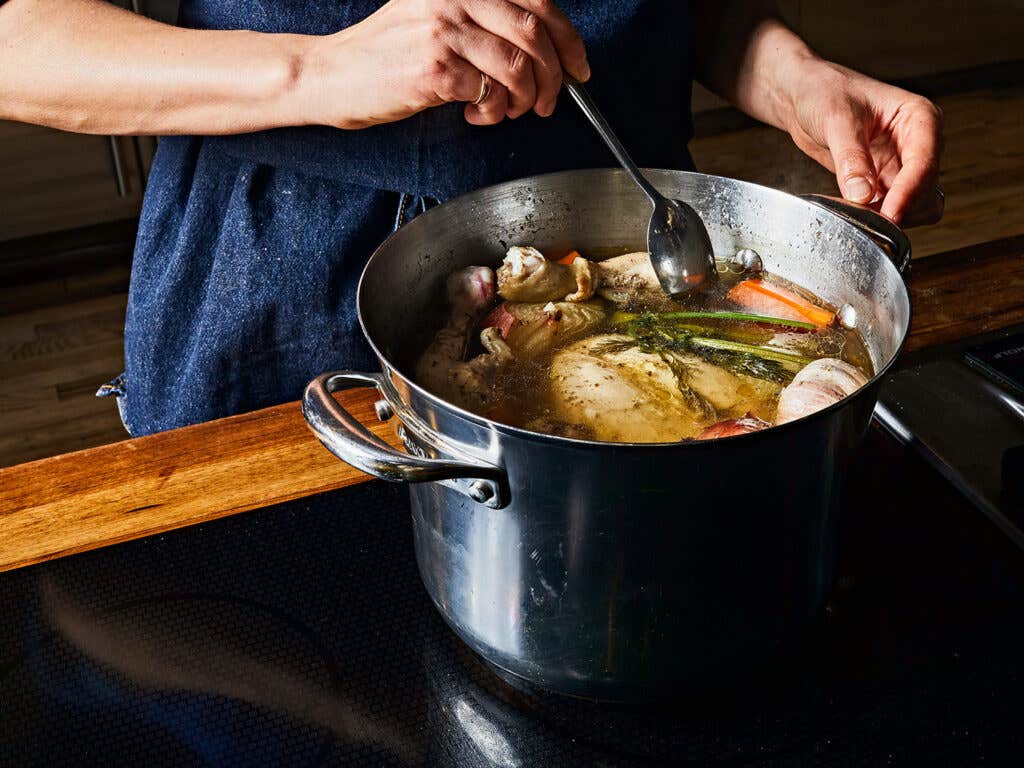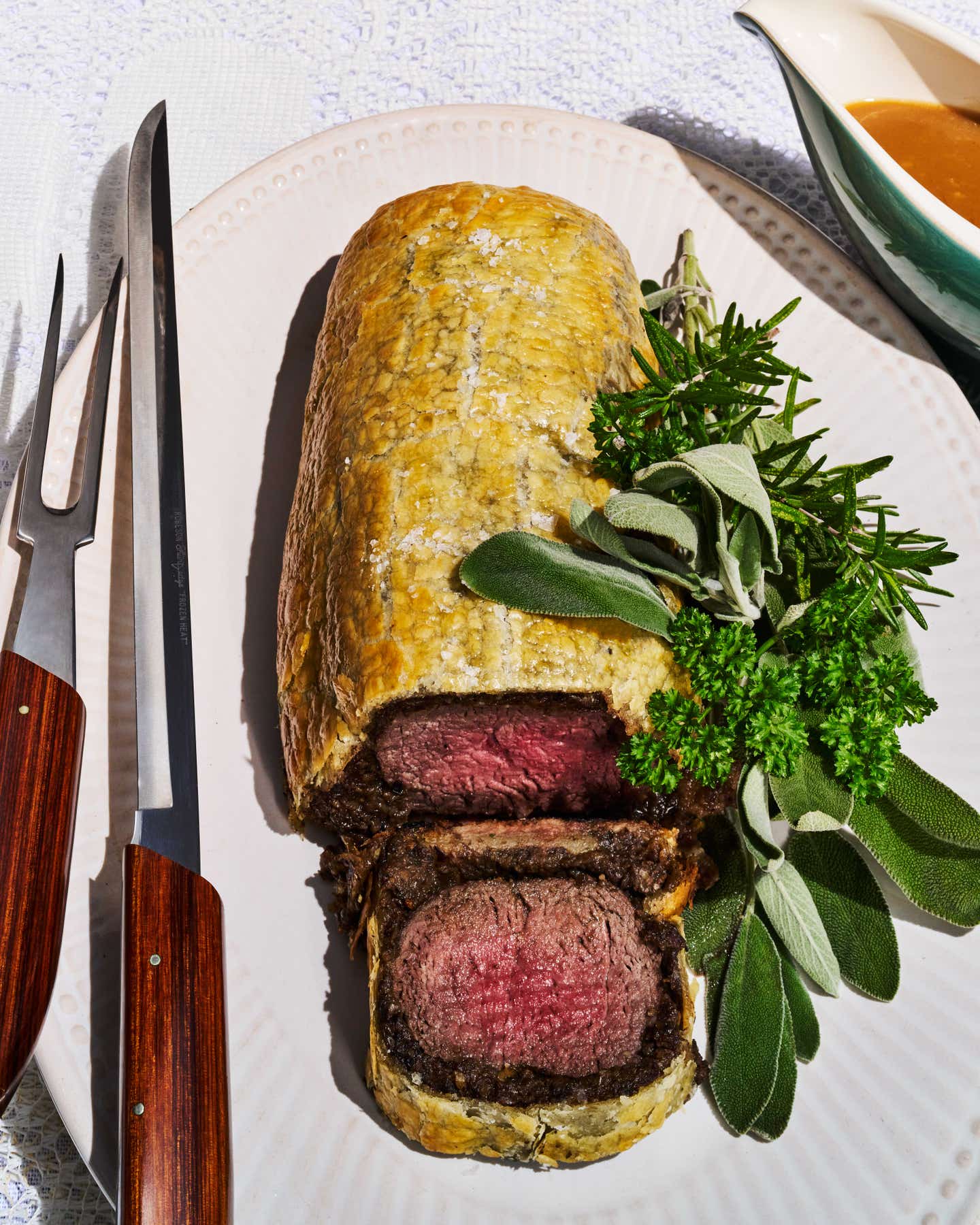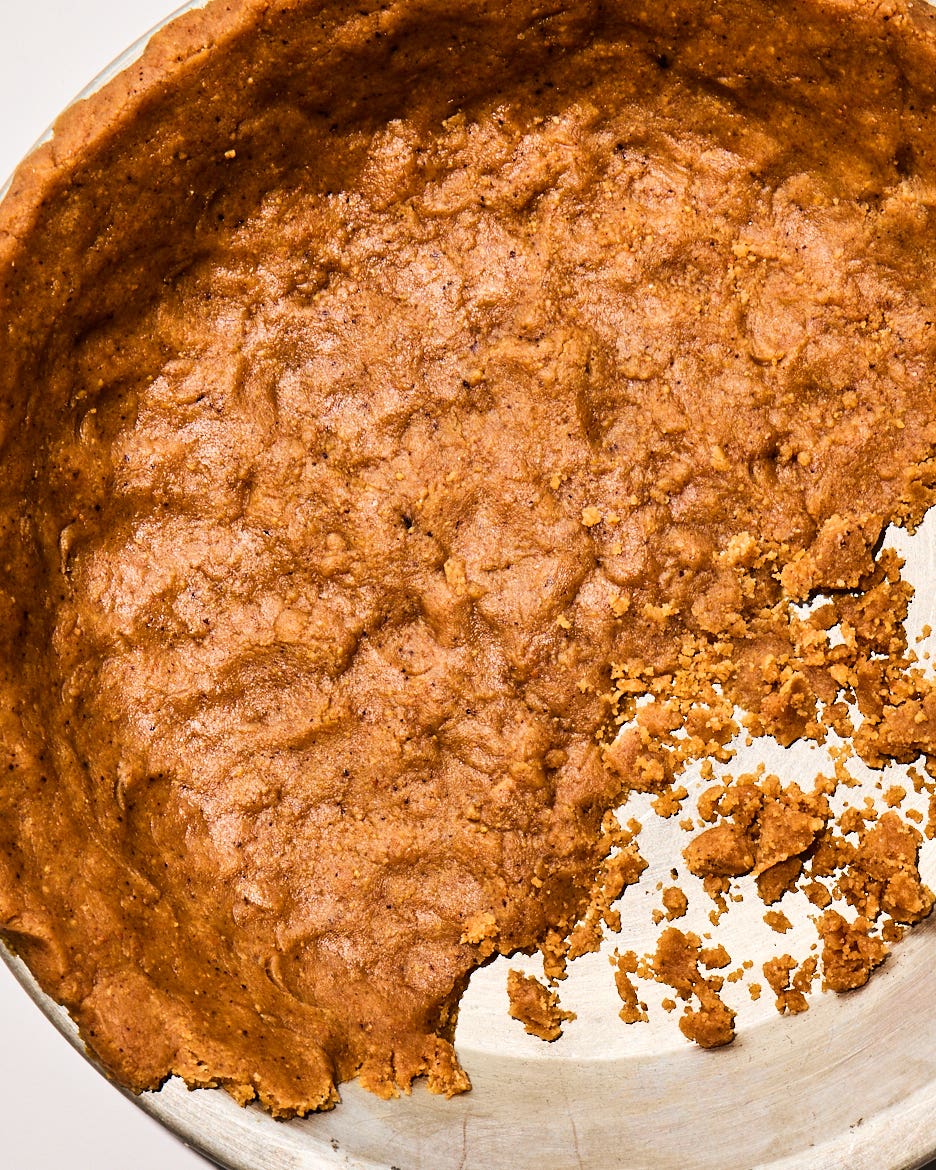The Only Chicken Soup Recipe You’ll Ever Need
Former SAVEUR editor-in-chief Stacy Adimando shares the ultimate nourishing bowl her grandmother taught her to make
- Serves
serves 4-6
- Time
1 hour 30 minutes

Grandma Stella left our family with a lot of special things—the verbally passed-down "recipe" for her garlicky pan-fried meatballs, a family-wide ability to flip a frittata with our eyes closed, and the skills for dominating a casino craps table just a few among them. But of all the critical life lessons I learned from my grandma, how to make this chicken soup is easily one of my most prized.
The woman was known for her incredible cooking, which was somehow impossibly simple and utterly, knee-weakeningly good at the same time. A regular day at her house would involve every meal lovingly made from scratch, and she always had a joyful attitude as she cooked and pushed us to eat more even when we were at maximum capacity. A week of her meals was never (ever)—regardless of the season—without a pot of homemade chicken soup.
Lots of people have homemade chicken soup recipes, I’m sure. But the truth is, I’ve never had a single one at someone’s home or in a restaurant that holds a candle to hers in any way. So often they are made with store-bought broths that are oversaturated with sodium or have an unnatural yellow hue, or ruined with overcooked herbs, too-soggy vegetables, or rubbery cubes of chicken. Don’t even get me started on the ones with limp, doughy noodles that sit in the pot for hours, overcooking to an even more extreme degree with every spoonful you take (or don’t).

"Italians cook everything simply" can't always be the answer to why their food tastes so good, but the spare number of ingredients Grandma Stella would use and the fact that each one only seemed to fortify the soup's natural sweetness is a fact that undoubtedly adds to its goodness. Hers was as bare-bones as one can get: a grocery-store chicken, water, onion, carrots, and a few drops from a can of tomato purée, with rice or a small pasta stirred in at the end. While it doesn't sound like the makings of a life-changing dish, I say in sincerity, it has: I cannot live without it.
My version is an adaptation of hers. I like to have some form of greens with most meals, and I go out of my way to get a well-raised chicken. Plus, I use tomato paste (which I tend to have on hand more regularly than cans of tomato purée) and add a bay leaf, garlic, whole black peppercorns, and a few drops of fish sauce—typically the Thai-style version I keep on my condiment shelf—to up the umami. But the bones of the recipe I owe to her, as well as the warm feeling I get all over whenever I take the first spoonful.

Here are my rules of thumb for making this perfect chicken soup.
Buy a Good Chicken I always do this anyway—in the hopes that supporting small, earth- and animal-conscious farmers will mean more responsibly raised options and fewer factory farms down the road. But buying a good chicken is critical when making any broth or stock for soup or beyond. Look for one that's been pasture-raised, looks juicy and not syrupy in the packaging, and is no more than around 4½ to 5 pounds. When in doubt, buying from a butcher that sources from local, family-owned farms is usually a good bet.
Remove the Chicken Skin I used to figure that fat added flavor—always and ever. But my grandma once told me that her soup came out just as flavorful after she removed the chicken skin. I quickly agreed and loved that it also made less work—without the skin, you don't have to skim off any excess fat from the top of the soup before serving. Nowadays I tear off the skin and discard before putting the chicken (or anything else) in the pot.
Keep the Broth Extra-Simple It's okay to put all kinds of things in a basic chicken broth—from the celery lying around in the crisper drawer to whatever produce odds and ends you have in the fridge. But for this specific soup, I've found that simple is best. Loading up on carrots yields a pungent sweetness and saturated color, and garlic and onion add plenty of flavor on their own. In particular, not adding celery goes a long way, eliminating any bitterness or aggressively "vegetal" flavor from the broth.
Salt Sparingly I would almost never advise a cook to hold back on seasoning a dish with a reasonable amount of salt, except in the case of homemade broth or stock. This one should mostly taste of vibrant carrots, subtly sweet tomatoes, and good chicken, and you only need a small amount of salt—think a pinch or two in the whole pot—to make it sing. If you'll also be garnishing with lots of Pecorino Romano cheese, like my family does, or using the suggested few drops of fish sauce, that will also add a little more sodium to the finished dish.
Shred, Don’t Chop It’s far less enjoyable to fish around for a bulky cube of chicken or one oversized carrot round when eating soup. I’d rather have a little bit of everything in one bite. Grandma would cook the carrots whole in the broth and smash them with a fork or her fingers before adding them back to the soup at the end. She would also pull the chicken instead of chopping it (she loved to steal bites of the steaming chicken while shredding it from the bones), which made it more tender and distributed a little meat into every single spoonful. Plus, both methods are just easier and feel more rustic and unique—I never make this soup any other way.
Ingredients
- 1 whole chicken (about 4¼ lb.), skin removed
- Neck and back bones of 1 additional chicken (optional)
- 1 lb. carrots (about 5 medium-large), peeled, ends trimmed
- 1 large yellow onion, halved through the stem
- 1 small head of garlic, top ½ inch cut off
- 20 black peppercorns, plus freshly ground black pepper for serving
- 1 bay leaf
- Kosher salt
- 3⁄4 cup brown or white rice
- 1 tsp. tomato paste
- 1⁄4 tsp. Asian fish sauce
- 3 cups finely torn or chopped Tuscan kale (from about 1 bunch)
- Finely grated Pecorino Romano and crushed red chile flakes, for serving
Instructions
Step 1
Step 2
Step 3
Step 4
Step 5
Step 6
- In a stockpot or large pot, add the chicken, bones (if using), carrots, onion, garlic, peppercorns, bay leaf, and a pinch of salt. Add just enough water to cover the chicken, about 11 cups (add a little more only if needed). Bring to a boil over high heat, then lower the heat to maintain a moderate simmer. Cook, skimming any impurities that rise to the surface, until the broth is richly flavored and the carrots are fully tender, about 1 hour and 10 minutes.
- Set a fine-mesh strainer over another large pot or a large heatproof bowl that can fit at least 10 cups. Strain the broth. Let the solids rest in the strainer until they’re cool enough to handle.
- Meanwhile, make the rice: In a small pot, add rice, 1½ cups water, and a generous pinch of salt. Bring to a strong simmer over medium-high heat, then reduce the heat to maintain a very low simmer and cover the pot. Cook until the water is fully absorbed and the grains are tender, about 15 minutes for white rice and 20 minutes for brown. Turn off the heat and let the rice rest, covered.
- Using your fingers, pull the chicken meat from the bones, prioritizing the meat you like best (you may have some left over) and shredding it into small strands. Transfer the carrots to a medium bowl and smash into bite-size chunks with the back of a fork (you will have about 2¼ cups). Add the carrots and 2¼–2½ cups of chicken back to the pot with the broth. (Reserve any remaining chicken for another use.) Retrieve the garlic and squeeze the cloves into the broth, if desired. Stir in the tomato paste and fish sauce until incorporated.
- When ready to serve, bring the soup back up to a gentle simmer. Gently fluff the rice with a fork, then stir it into the broth. Add the kale and cook until the rice is warmed through and the kale is just wilted but still bright green, about 3 minutes. Taste and adjust the seasoning with salt as needed.
- Ladle the soup into bowls. Top generously with pepper, Pecorino Romano, and red chile flakes to taste.
Keep Reading
Continue to Next Story










